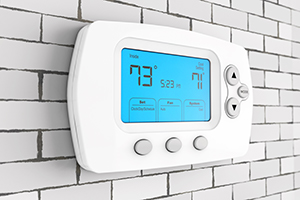Have you given consideration to where you store goods ready to be printed, or how they’re stored after they are decorated? An often-overlooked component to decorating garments is the environmental impact of the facility itself on the product.
You likely have carefully mapped the workflow of your team from receiving garments, checking them in, staging for production, reviewing final decoration, finishing services, boxing up and finally shipping them out. In between these stages, the product might live on rolling carts or is stored in open boxes for quick access on shelves, and is then boxed after decoration for either shipping or fulfillment.
There are many factors that can affect the decoration of the garments both pre- and post-production. Let’s explore a few of them below.
Climate-Controlled Environment
Ideally, store the apparel in a climate-controlled environment to minimize temperature and humidity fluctuations. Extremes in temperature and humidity can damage the fabric, ink and thread of the decoration.
- Too cold, you risk thread and ink stability and decoration variance within larger runs as the temperature rises/cools.
- Too hot, you risk ghosting, bleed, and an increased risk of crocking.
- Storing garments that are damp can lead to mold, mildew and deterioration. Higher-humidity summers can increase the risk of moisture content after running through the dryer.

In an open two-story decoration facility/warehouse the heat will rise, reducing heat accumulation on the floor. When using pallet racking, upper shelves will inherently be exposed to higher temperatures accordingly.
If using shipping containers to store overflow product, keep in mind that the container will retain heat longer and reach temperatures above the outside environment. It is akin to the heat accumulation of a hot vehicle in direct sunshine. If you’re sweating, your ink may be too!
Direct sunlight should always be limited. The longer a product is exposed to sunlight or some indoor lights (incandescent and fluorescent), the potential for fading/discoloration can occur.
- The use of LED’s is not only a benefit to your electric bill, but they will also limit the UV exposure to garments.
- Lay garments as flat as possible when out of the box, as a folded garment will provide an opportunity for stress on a decoration and potential for discoloration of the garment at the fold.
- Use a breathable protective cover (poly bag), when required, to reduce both moisture and heat buildup.
Facility Air Quality
When screen printing sweatshirts you likely will have particles in the air created by lifting the fleece off the pallets. As these particles fall back to the ground, they can transfer to other garments waiting for production (print quality) or to open boxes waiting for shipping or fulfillment.
If you’re using a pre-treated shirt or drying your recently treated shirt in prep for DTG printing, the cleaner the workspace, the better your print will be. Any dust or lint will naturally reduce your final print quality.
Crocking
For our purposes, crocking doesn’t mean that you’re getting dinner ready in the slow cooker. When it comes to apparel, crocking refers to the transfer of color from a piece of clothing or fabric to another surface as a result of rubbing one against the other.
To help prevent this, items that arrive with covered hardware (jackets and bags especially) should either be kept in the packaging from the manufacturer or it should be replaced upon completion of the decoration. When boxed, if the hardware isn’t covered, it could allow for the transfer of dyes to occur due to friction.
Challenges resulting from storing product incorrectly can be seen whether it’s in your building for two days, two weeks or two months. Not every solution is practical and not every risk will apply to your facility, as each region of the United States, the time of year, and your building itself are unique to your own business. Only an internal review can assess the true risk factors that apply to you.
Ultimately, the goal is to provide your customer the best decorated product and reduce spoiled products or decorations. If you have more questions about how to properly store your goods, ask away! Send our Decorator & Digital Solutions Team an email anytime to get our advice.
